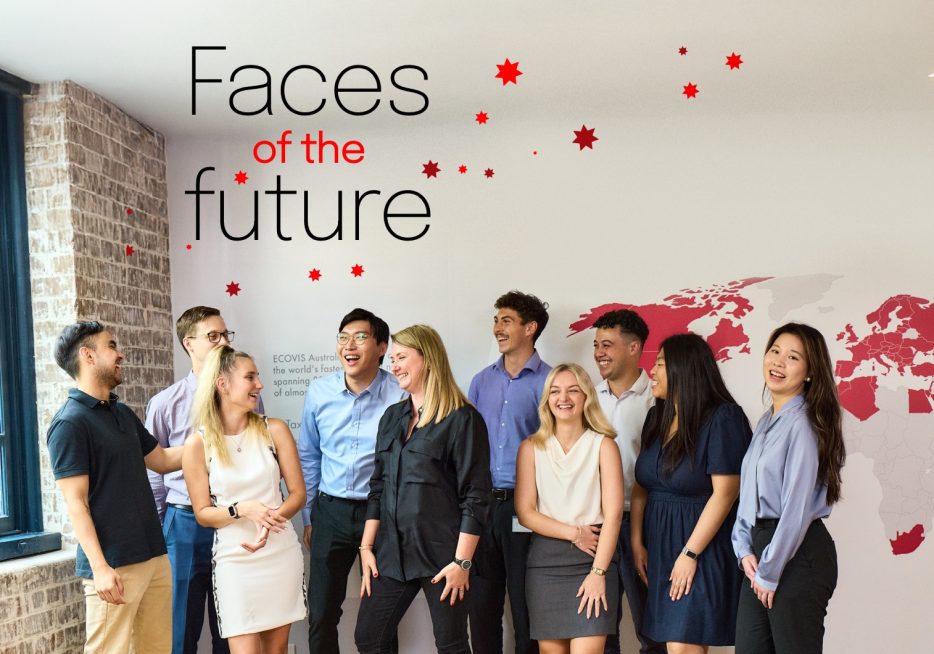Having passionate young professionals on the team is proving a powerful differentiator for Ecovis director Elissa Lippiatt.


Video
Creative thinking has all sorts of benefits, not just for marketing and promotion, but also for solving business problems and innovating. Advertising executive Carolyn Miller shares tips on how small businesses can benefit from creative persuasion.

Creativity doesn’t live in a vacuum belonging to only special people like poets and artists – it’s a skill that can be learned and developed by anyone, according to Carolyn Miller, Strategic Planning Director for Moon Communications.
“Creative thinking has all sorts of implications, not just for things like marketing and promotion, but for solving business problems and innovating,” she says. “New ideas are one of the great cornerstones of creative thinking and some of the most creative thinkers in the world are accountants, engineers and scientists. Artists live in many guises.”
Miller, who’s a regular panellist on the ABC’s Gruen Transfer, will be sharing her views on the power of creative persuasion and the importance of a creative workspace, at the Small Business Big Marketing event in Melbourne on August 28 as part of the Small Business Festival Victoria.
“It’s often challenging for small business owners to escape the day-to-day running of their businesses, we know how busy they are and this is very understandable,” she says. “But in order to stay relevant, business must be constantly looking to innovate and evolve. Creative spaces are an encouragement and a facilitator for the creative process. It doesn’t even need to be your own environment. It could be somewhere you go in order to give yourself space to think differently – a park, a coffee shop, an art gallery or a dedicated creative space.”
And while people tend to think of creative workplaces as the domain of companies such as Google and Apple, which are edgy and funky, and filled with gaming tables and free snacks, not every office has to look like that. What’s important, according to Miller, is thinking about what stimulates your business to think differently – for example, the use of colour, inspiring posters and phrases or popular culture references.
It’s also important to make the time for creative thinking. “Ensure that idea generation is encouraged; don’t have ‘but this is the way we’ve always done it’ as a mindset,” she says. “Challenge your existing ways of doing things and ask yourself if it can be done another way. Ask your customers and your staff for their ideas – great ideas can come from anywhere.”
Coming up with ideas is all part of a day’s work for Miller who has over 14 years’ experience in the advertising and media industries. After studying communications at university she got a job as a production assistant for a media company.
Her big break came when she joined advertising agency Euro RSCG (since renamed Havas). “It really was a bit of alchemy – great colleagues, great clients and as a result my work really went from strength to strength and my career opportunities grew,” she says. “I genuinely enjoy the psychology of advertising and communications. There’s a lot of momentum at the moment in behavioural psychology and why people buy what they buy. I find this fascinating and realise how little rational thought goes into my brand and product preferences.”
She’s also become a recognised authority on creative persuasion, something she believes small businesses can utilise. “A story gets people interested and can keep them engaged,” says Miller. “This is what creative persuasion is and we do it so the important information is heard. The average person is exposed to 5,000 ads per day, so if you’re unable to capture the attention of your audience and keep it, your message will be lost entirely. Small businesses need to think about their brand, and ask themselves what their brand story is. Is it reflected throughout all components of their business? If not, where are the gaps? How can they be fixed? And what creative ways can we use to get the story out there?”
Miller suggests small businesses start any marketing and branding with knowing their audience. “You are never going to appeal to everyone, so make sure you really understand what your core customer looks like and tailor your messaging accordingly,” she says. “If you understand them, this will influence not only your advertising communications, but your media channels, your customer retention program, your database management, etc. It should hopefully also act as a guide in new service/product development or future planning.”
Find out more about Small Business Big Marketing at the Small Business Festival Victoria.
More from NAB:
© National Australia Bank Limited. ABN 12 004 044 937 AFSL and Australian Credit Licence 230686.